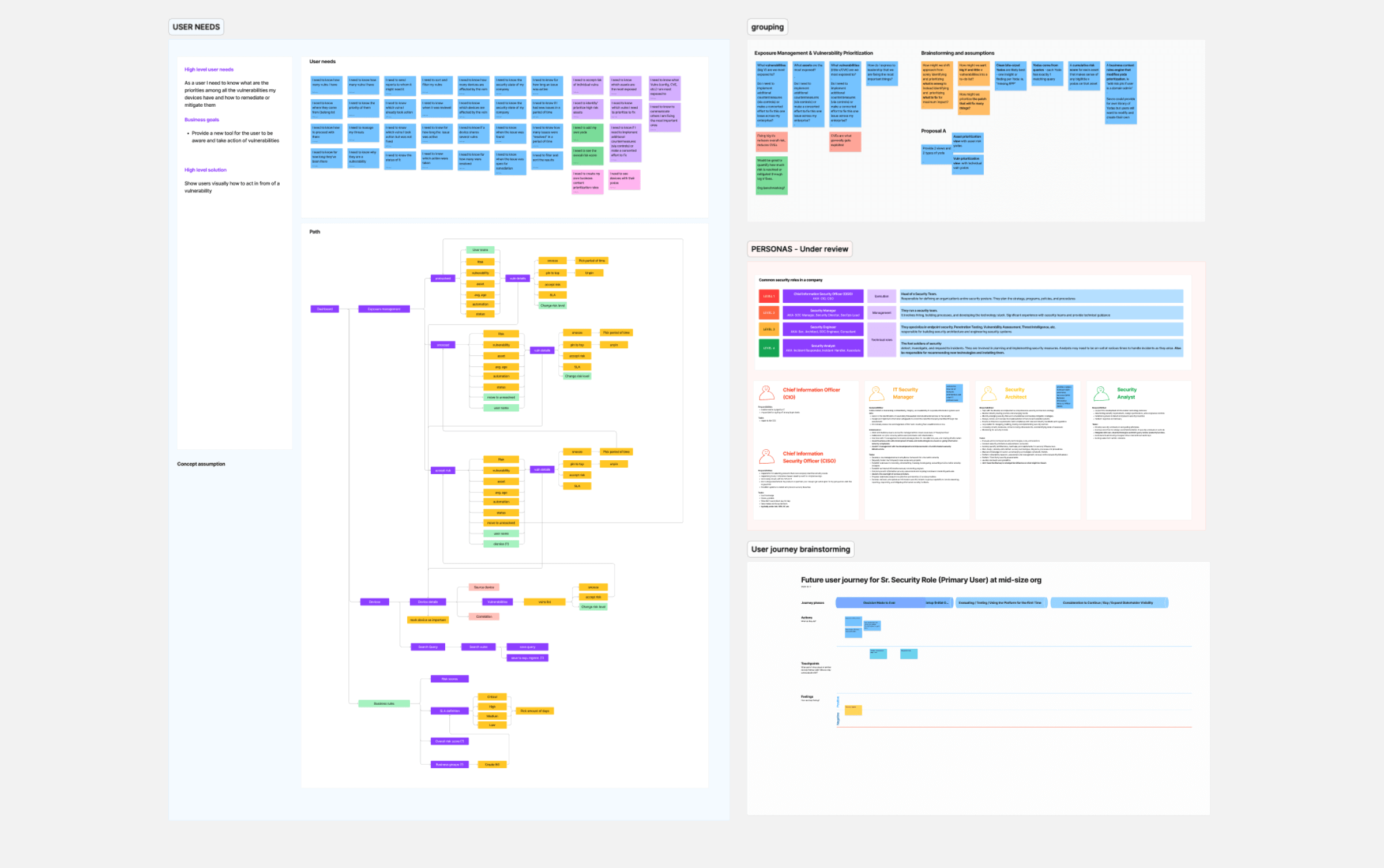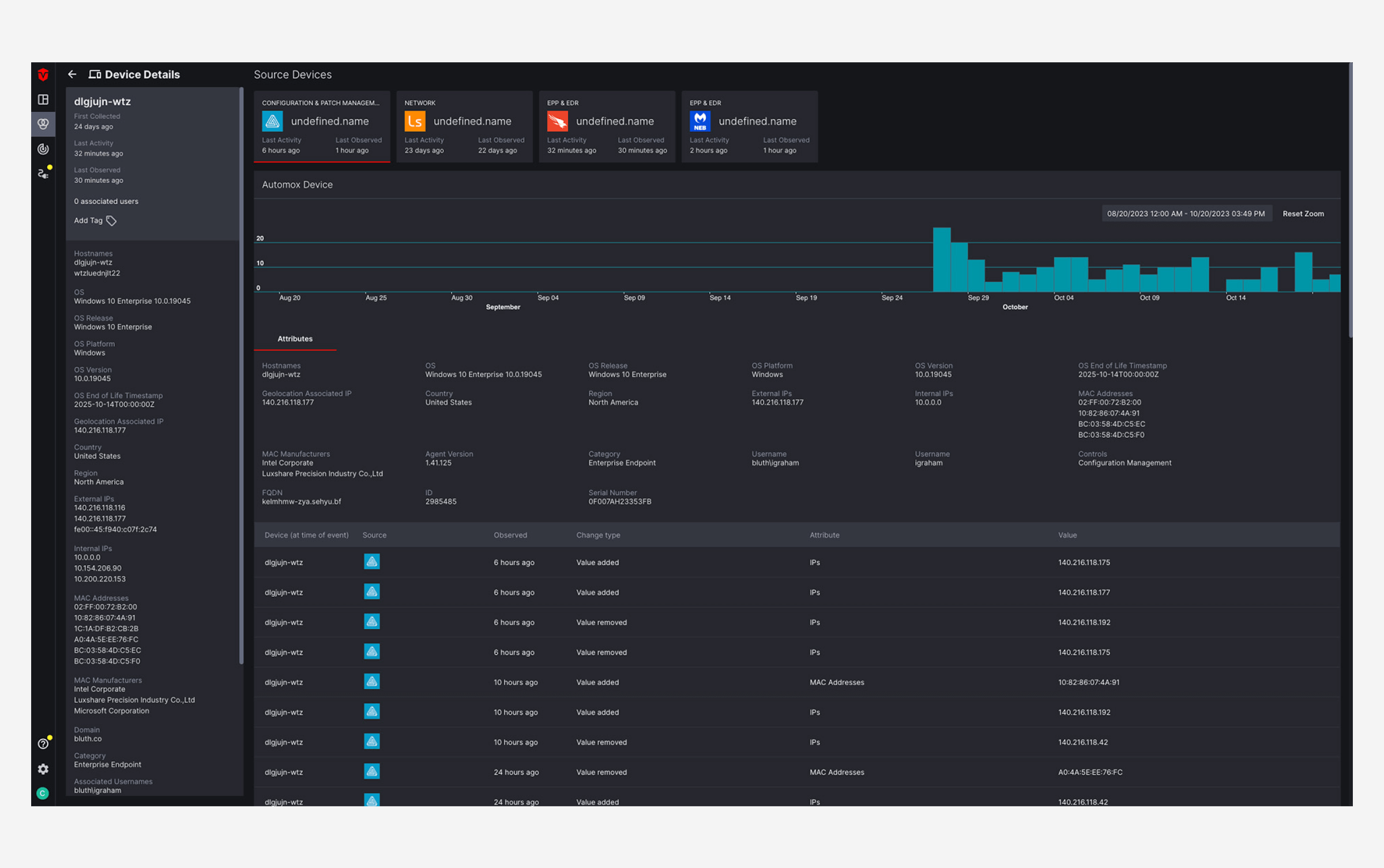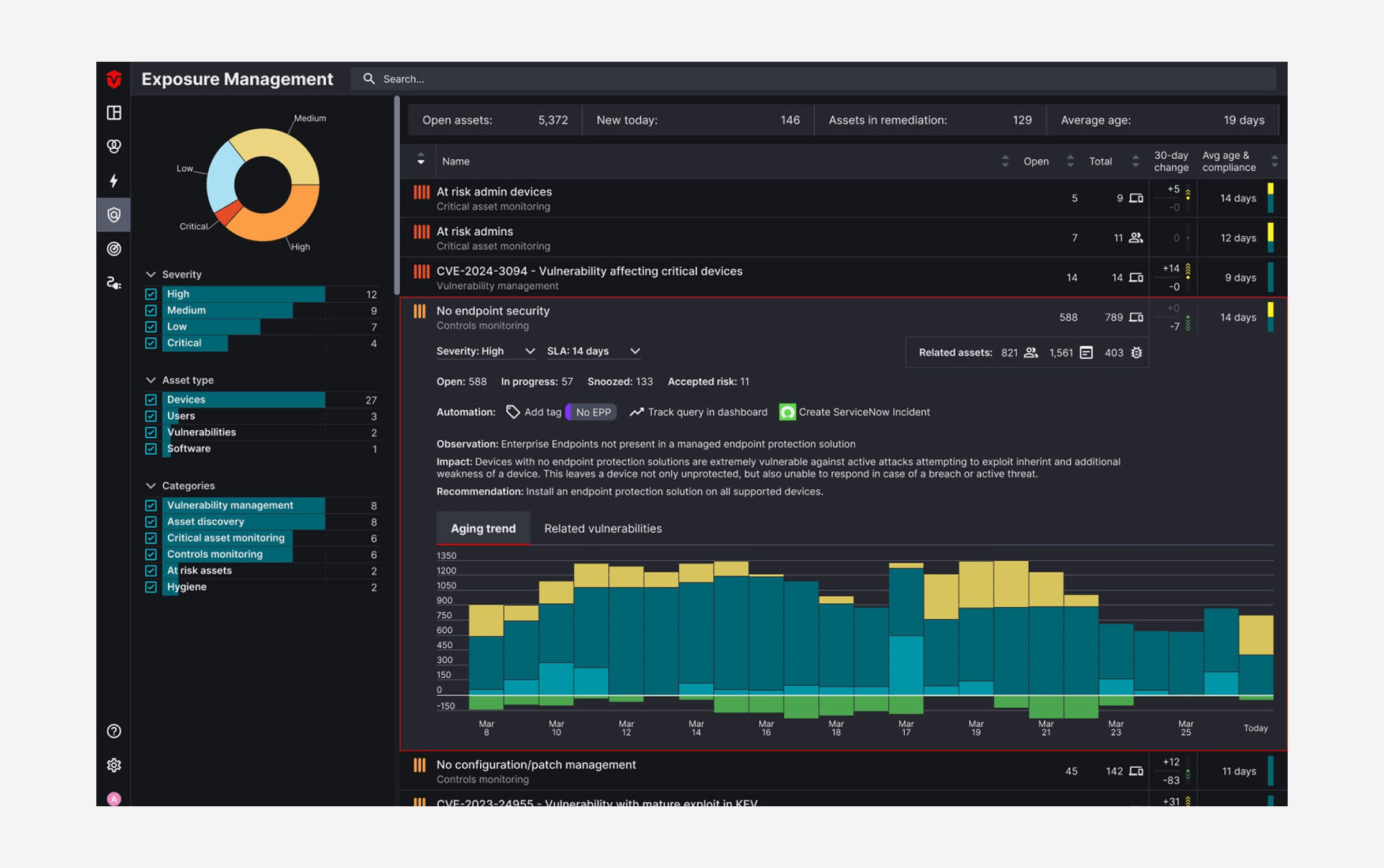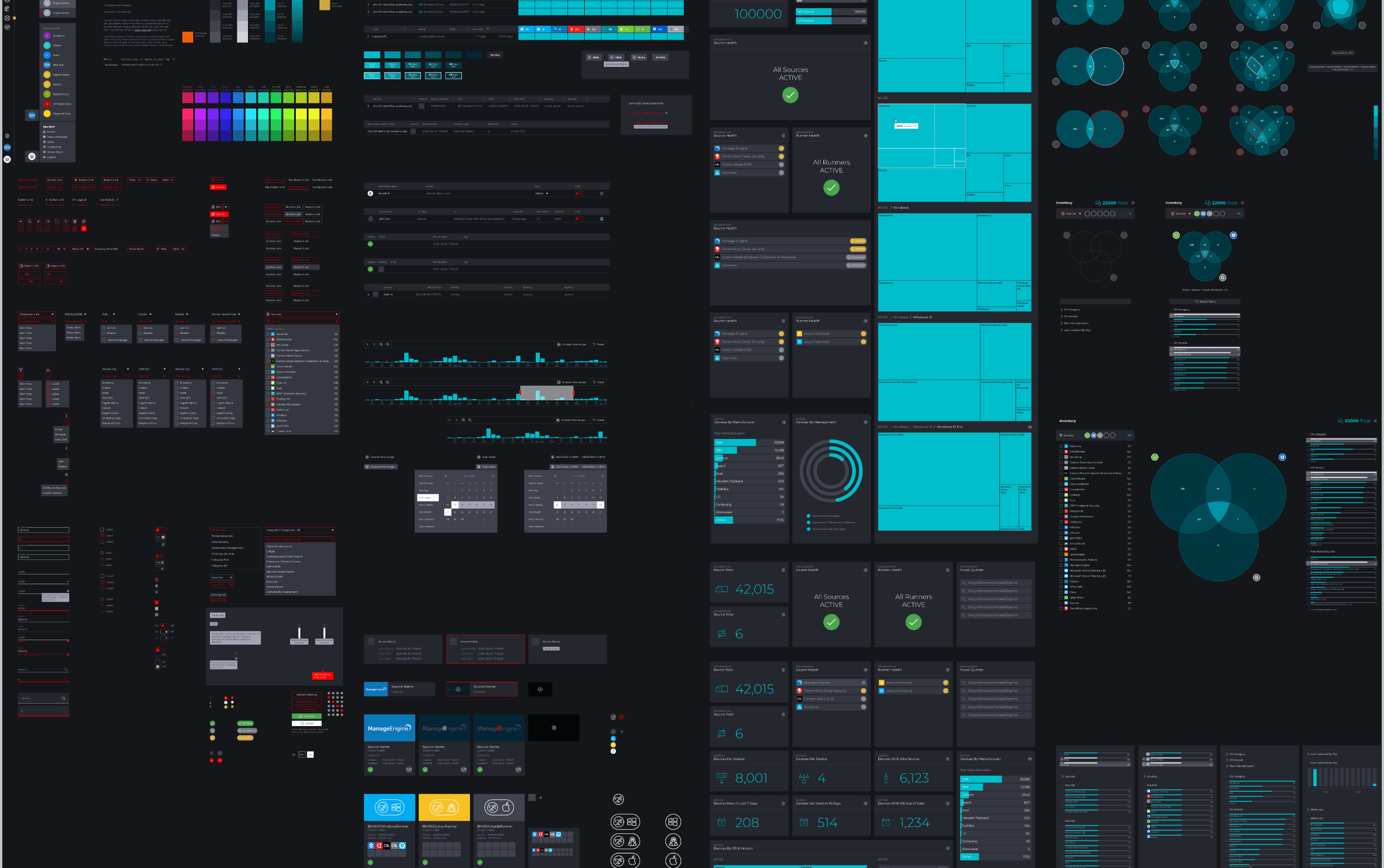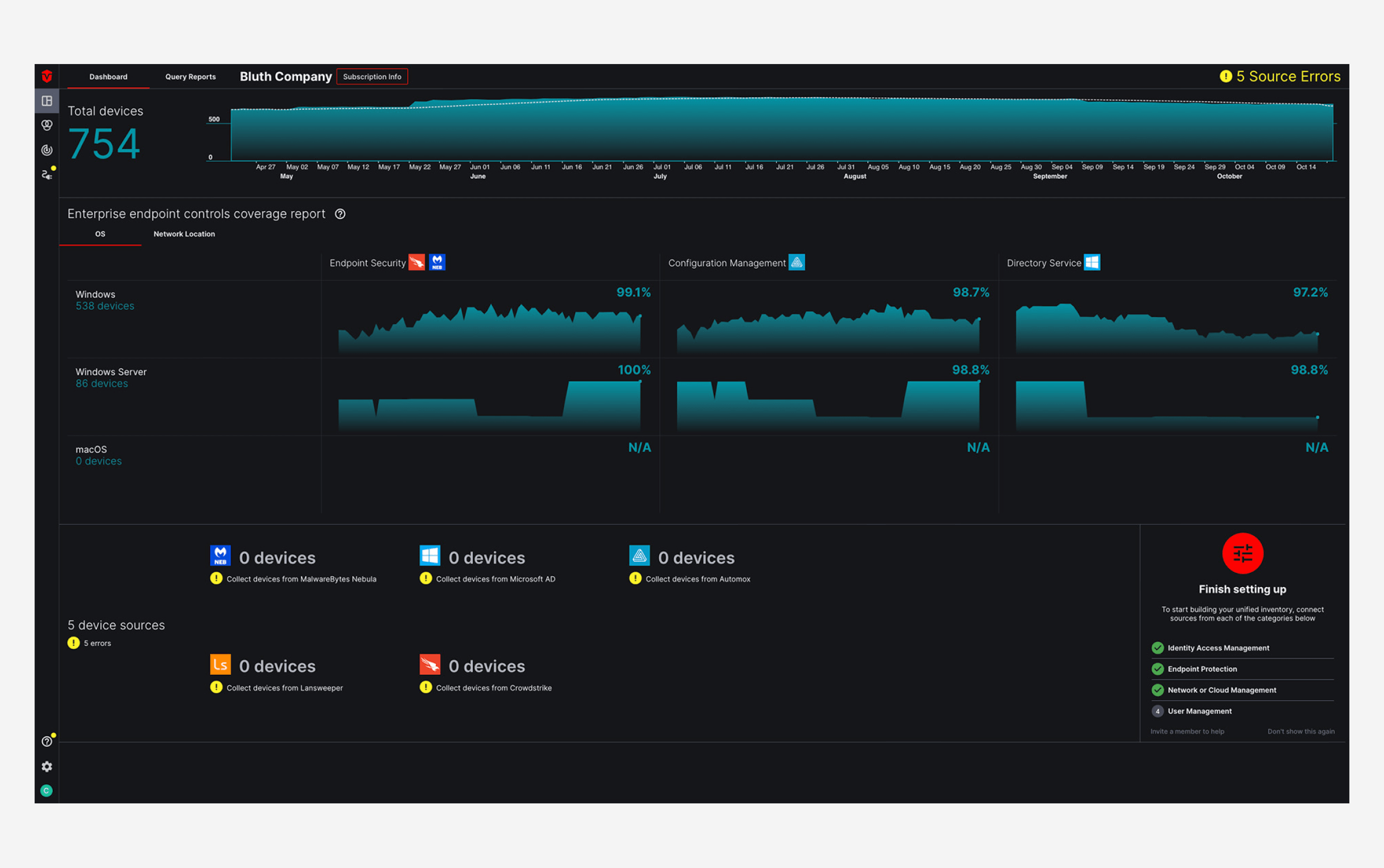Sevco
One Platform for Continuous Exposure Management.
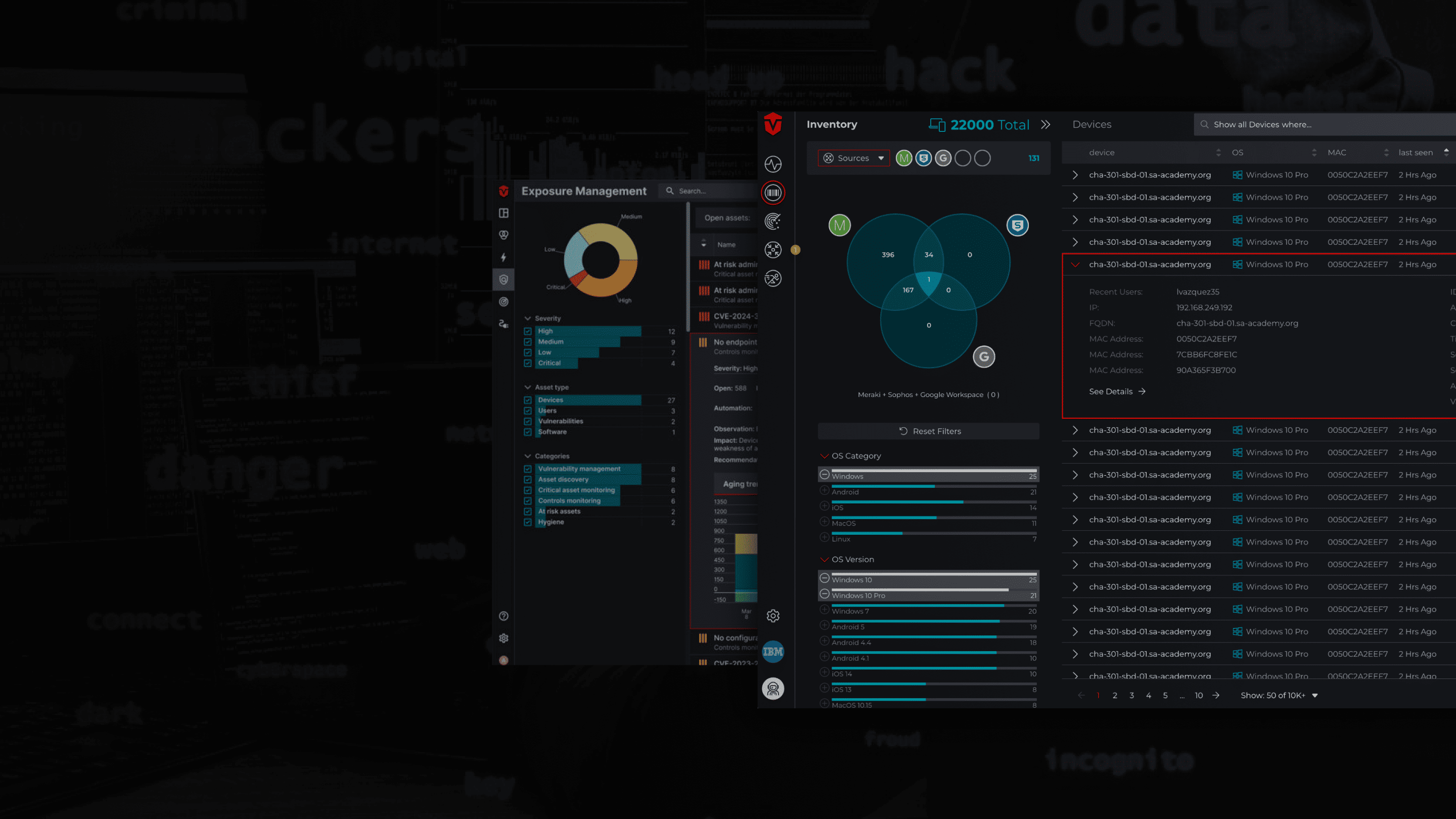
Product Audit
Building and Evolving Sevco’s Dark Mode Design System
Before making design decisions, I performed a comprehensive UX/UI audit of Sevco Security’s platform to evaluate the current state and uncover improvement opportunities. This included:
- Heuristic evaluation: Identifying usability issues by analyzing workflows, navigation, and visual hierarchy against UX best practices.
- UI consistency check: Reviewing typography, color, and components across screens to flag inconsistencies that could confuse users.
- Workflow mapping: Tracing key user journeys (e.g., setting up assets, viewing security data, managing incidents) to spot bottlenecks or unnecessary steps.
- Accessibility audit: Assessing contrast, interaction patterns, and responsiveness, critical for a product used by security professionals in varied environments.
- Benchmarking competitors: Studying similar cybersecurity platforms to compare interaction models and identify industry-standard patterns.
- User feedback analysis: Reviewing support tickets, user interviews, and analytics to validate findings with real-world pain points.
Platform Architecture
Shaping Sevco’s Platform Architecture for Scalability and Usability
I worked on the platform architecture for Sevco Security, defining the structural foundation for core features, workflows, and user interactions. This involved mapping complex cybersecurity use cases, organizing information hierarchies, and ensuring the system could scale with multi-tenant environments.
I collaborated closely with product and engineering teams to align the UX with technical requirements like data visualization, role-based access controls, and security protocols, creating a cohesive and efficient experience for security professionals.
Business & User Goals
Aligning UX with Growth and Engagement
I focused on making sure every design decision balanced user needs with Sevco’s business goals. The aim was to simplify complex workflows for security teams while helping the product grow through better usability and adoption. By tying design improvements to key outcomes—like faster task completion, fewer errors, and higher engagement—I worked to create an experience that’s not only intuitive for users but also valuable for the business.


